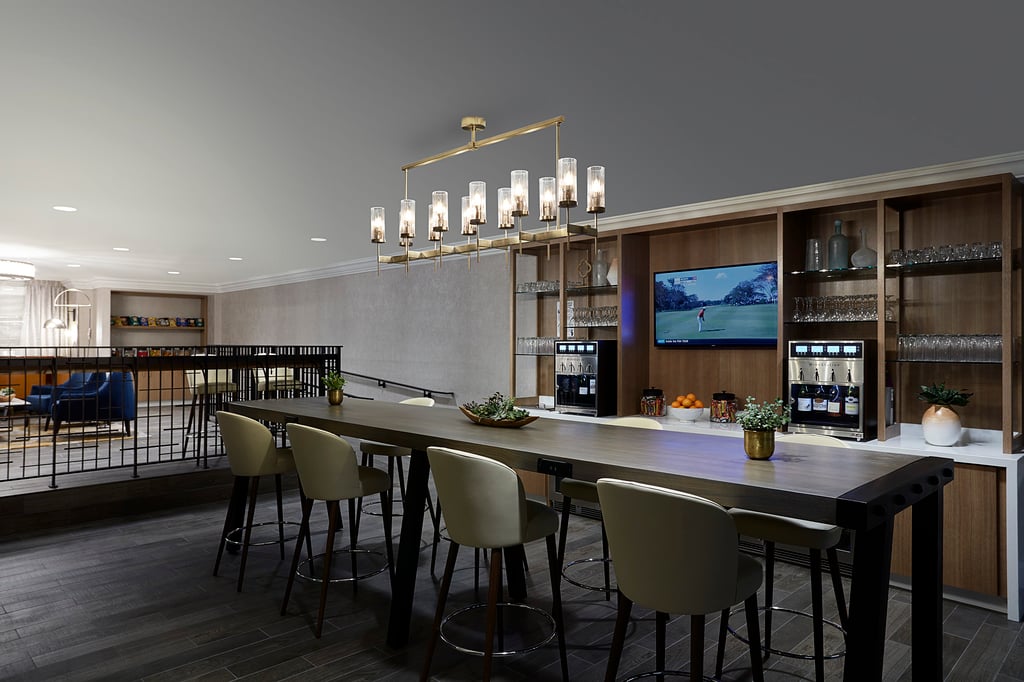Admin
Nov 4, 2024 12:15:00 PM
The beauty of lighting lies in its nuance and complexity — and underlying the work of a lighting designer is a knowledge of some pretty technical details. As with anything informed by both art and science, lighting comes with terminology and jargon that can feel foreign to many. Whether you’re working with a lighting designer or looking to ground yourself in all things design for an upcoming project, we’re here to make lighting easy for all. Below, we’ve created a glossary of terms that offer an inside glimpse into how lighting professionals talk about lighting, and help decipher all that jargon, so you’ll be speaking lighting like a pro!

- Lumens – A scientific term for how much light is coming from a particular source.
- Brightness – A subjective term for how much light there is. Can be related to a space or to a luminaire.
- Glare – Brightness that is misplaced or unwanted. A great example of this would be light hitting your eye as you’re driving.
- Flicker – The uncontrollable dance that some lights give off. This can happen due to a poor quality product, a mismatch in product and dimmer, or poor power quality, amongst other things.
- Digital Dimming – This type of dimming process mitigates flicker, which in turn, causes less eye strain and headaches! Digital dimming also allows for very low-level dimming.
- LED – Translates as “light emitting diode”: simply the part of the luminaire that produces light.
- Driver – This device regulates your light’s voltage and its power source. All LED products use a driver of some kind. Some are simple transforming devices, others have sophisticated electronics. That plastic part in the replacement LED lamp you have in your home is where the driver is located.
- Voltage – This is synonymous to pressure in a water system. Typical voltages in a US home are 120v and 240v. 240 is used for your AC compressor. LEDs typically work in 12-24 volt systems.
- Wattage – This is a measurement of power – i.e. how much power your luminaire will use.
- Amperage – This is the unit of measurement for the rate of electrical flow – for example, a 15 amp breaker in your circuit panel. Voltage, wattage and amperage are all related. You can remember it as West Virginia: W = V * A
- Lamp – A lamp can be any of the various devices that produce light and sometimes heat. It is not that thing on your bedside table, that is a luminaire.
- Luminaire – A complete lighting unit designed to distribute the light you desire in the space you’re designing. A luminaire can be anything from a showstopper pendant to a discreet in-ceiling spotlight to the light on your bedside table.
- Color Temp – A measure of the color of the light: warmer temperatures resemble an amber hue (2700K), while cooler tones have bluer hues (6000K).
- Correlated Color Temperature (CCT) – A measure of the color of light for sources with an interrupted light spectrum such as Fluorescent and LEDs. Warmer temperatures resemble an amber hue (2700 CCT), while cooler tones have bluer hues (6000 CCT).
- Color Rendering Index (CRI) – Does red look like red? CRI helps us answer this by telling us an object’s color appearance based on the light source’s color spectrum. Lighting designers use this value to access how the colors in your interior render, capturing and enhancing your design intent. CRI is not perfect and should only be used as a reference. Two 80 CRI products will not render the space the same. Use with caution.

